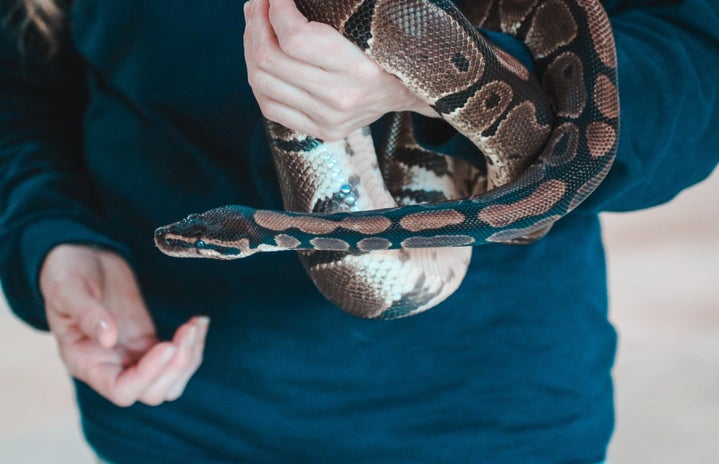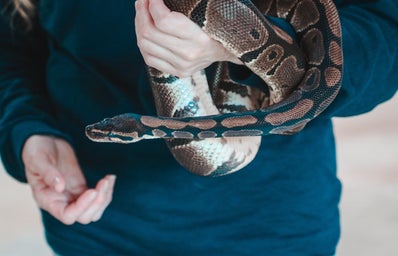Her heart chugged in her chest like a steam train on full speed. She pressed both her hands over her nose and mouth to silence her breathing. Her horrified gaze remained fixed on the dark region beyond the slightly parted closet door. She lay in bed, too paralysed with fear to even reach out to her nightstand and turn on the light. It was watching her. It knew she was awake.
A classic horror movie scene that always has its audience on the edge of their seats with anticipation or with their hands over their face too afraid to even look. The intense feeling of fear is what it often boils down to and what forms the basis of all phobias.
Phobias are defined as the extreme and irrational fear of certain objects, animals, or situations. Now, some may inquire as to why phobias are defined as being an irrational fear if the feeling of fear is quite natural to both humans and animals. Well, the answer is quite simple: let’s look at arachnophobia for example, the fear of spiders. Keep in mind that by intense fear I mean the feeling that your life may be in danger. You could argue then that spiders may sometimes be venomous and dangerous so wouldn’t it be natural to feel threatened by them? Well, what makes arachnophobia – and likely all other phobias – irrational, is that the person experiencing them can often feel anxious or stressed at the mere thought, or image, of a spider.
Below is a list of 6 common phobias some, many of us may actually be quite familiar with (except perhaps for the terminology) and others, well, others you might not have thought of as being phobias at all.
- Arachnophobia
-
“It’s a spider, get it off, get it off!”
Ah yes, that all too familiar line we commonly hear in horror films when the characters wonder though an old and abandoned haunted house. Cobwebs everywhere and suddenly a spider falls on the shoulder of the one person who is likely the most afraid of spiders.
It is true that we are not all as brave as Peter Parker to allow a spider to land on the back of our hands and bite us, even if it means that said spider could likely give us superhuman or spiderlike abilities. We are all fans of spiderman, but what about those who arearachnophobic? Would they view spiderman as a superhero or a supervillain?
Arachnophobia is one of the most common phobias affecting approximately 3.5- 6.1% of the human population, that is 300-400 million people. Although around 55% of the world’spopulation does have a fear of spiders, it is not necessarily a phobia.
- Ophidiophobia
-
“Hiss, hiss, ssss”
If that’s a sound that will have your heart racing, your eyes rapidly scanning your surroundings, your body frozen with fear, you likely suffer from ophidiophobia: the fear of snakes. Ophidiophobia, other than being a bit of a tongue twister,is the second most widespread kind of specific phobia. Approximately one third of adult humans suffer from this type of phobia globally.
Me: *types into google* “Five easy steps to learning parsel-tongue”
- Aerophobia
-
“Say, how long would it take to travel from Cape Town to Japan… by car?”
As ridiculous as this may sound, aerophobia – the fear of flying – is another common phobia many experience. Aerophobia should however not be confused with the fear of heights, instead it is rather the fear of boarding an aeroplane or any mechanism that induces flight. Now you could say “Errexcuse me last time I checked humans weren’t born with wings so how is being afraid of flying considered a phobia?” Well statistics show that traveling by plane is actually safer than traveling by car with the chances of an aeroplane crashing being one in 5.4 million.
- Acrophobia
-
Nope this is not the fear of acrobats but rather the all too familiar fear of heights. Tall buildings, swaying bridges, steep staircases all of which can often result in extreme anxiety or even a panic attack in a person who is acrophobic. Acrophobia affects 6% of people globally so, if you are afraid of heights just remember you are not the only one. Just keep calm and don’t look down.
- Pistanthrophobia
-
The fear of trusting people. This is often due to past experiences or relationships with people that have had negative outcomes and as a result they can no longer bring themselves to trusting people again.
- Atychiphobia
-
The fear of failure. To some extent we all have a fear of failure, however those who are atychiphobic may be reluctant to try new things as there is always a possibility that they may not succeed in it. They often stick to what they are good at, remaining in their comfort zones in order to avoid failure.
These are only but a few of the wide range of phobia’s that exist out there, some common, some (as with the last two above) that we may not have thought of as phobias, and others, that are simply bizarre, for example, optophobia: the fear of opening one’s eyes. Phobias are anxiety disorders that are easily treated through cognitive therapy so, with the proper treatment you could be sky diving in no time.
P.S. I apologise for making you mentally pronounce pistanthrophobia, ophidiophobia and atychiphobia all at once.


